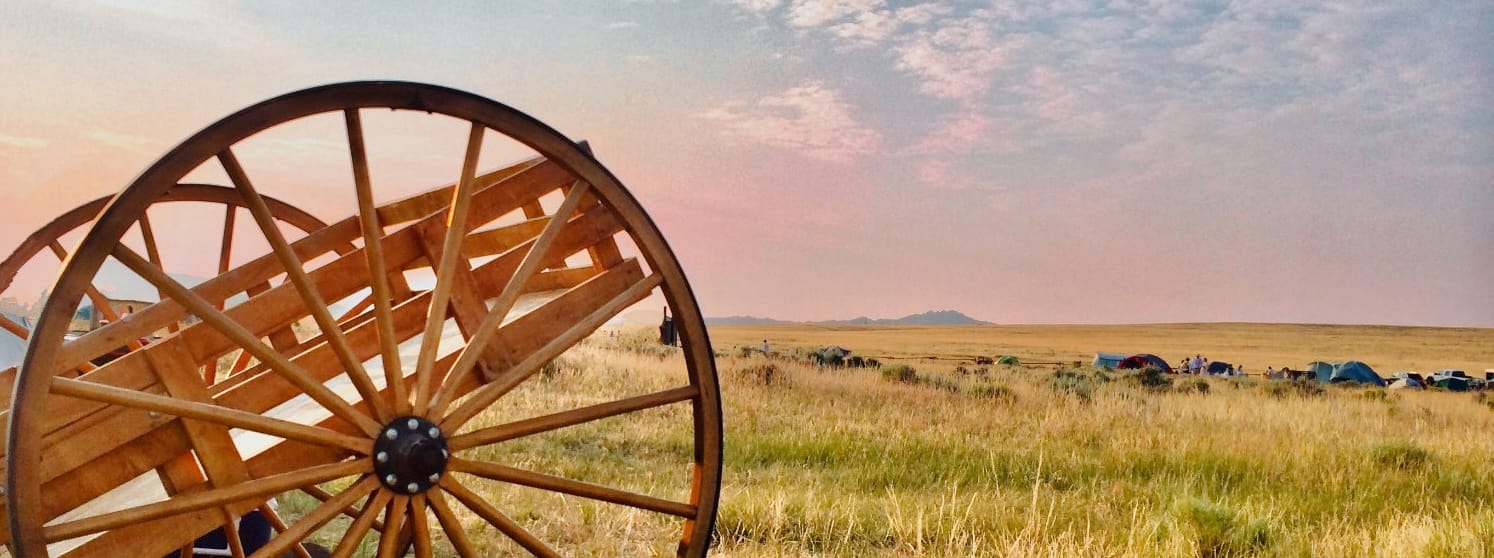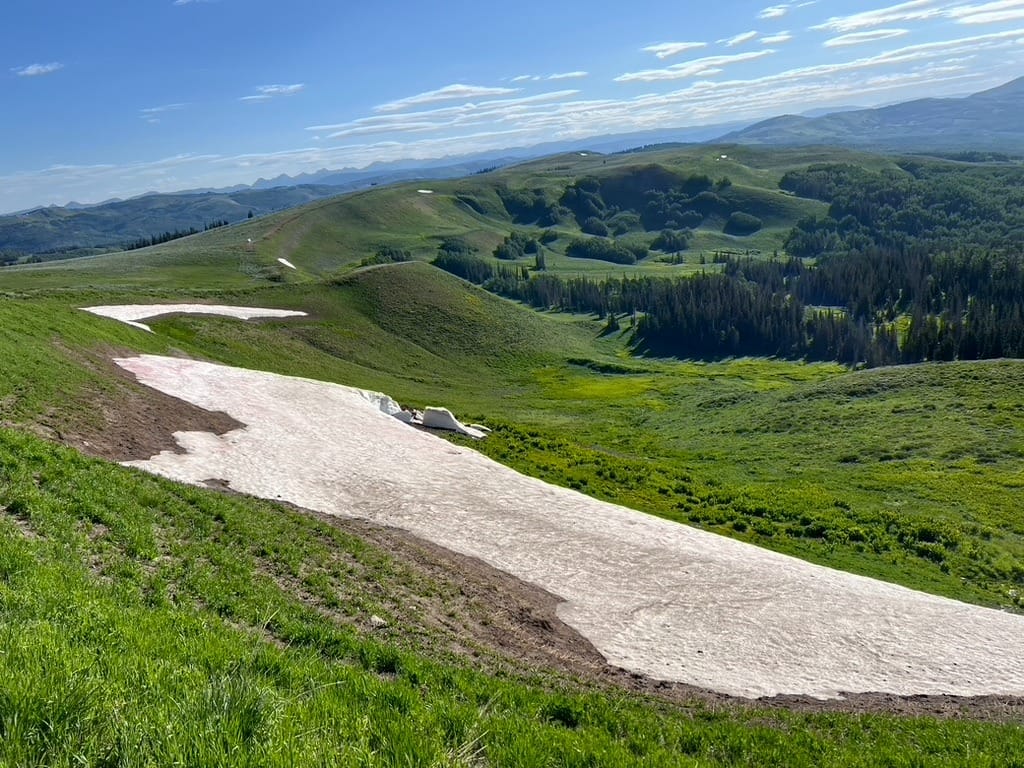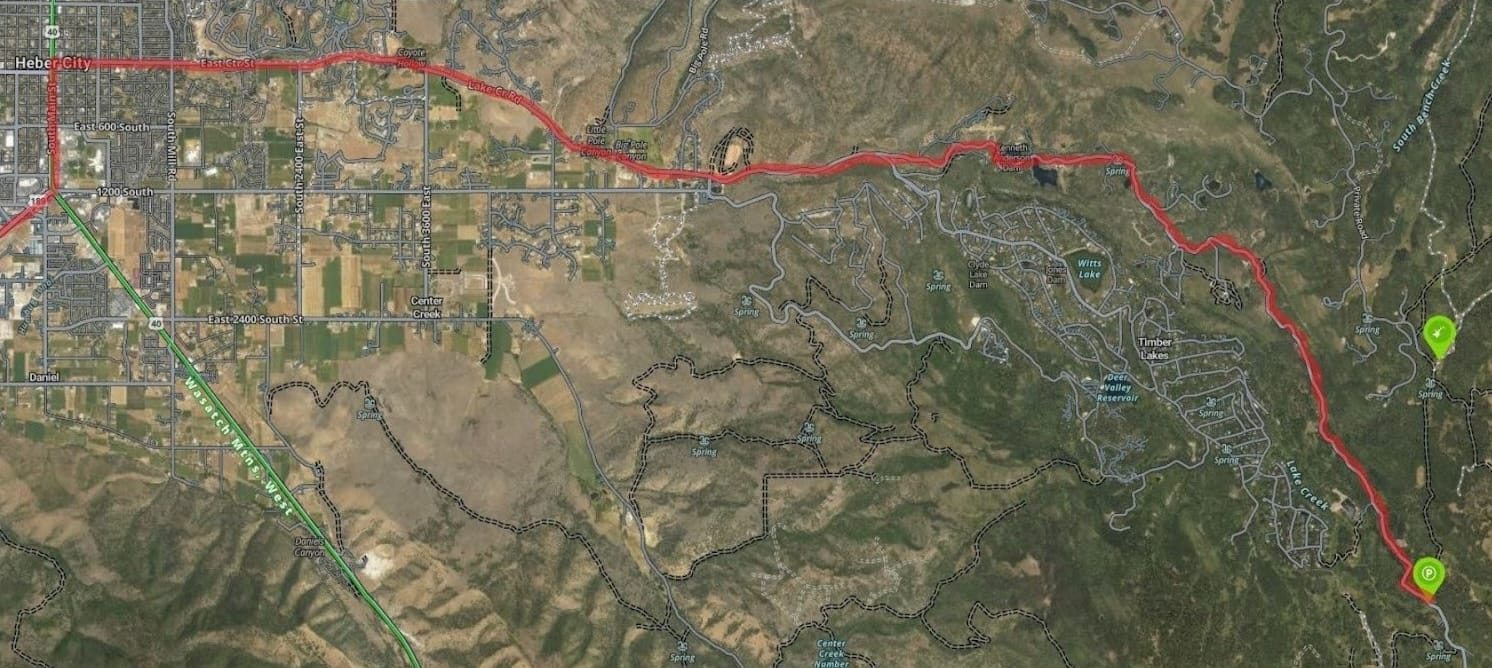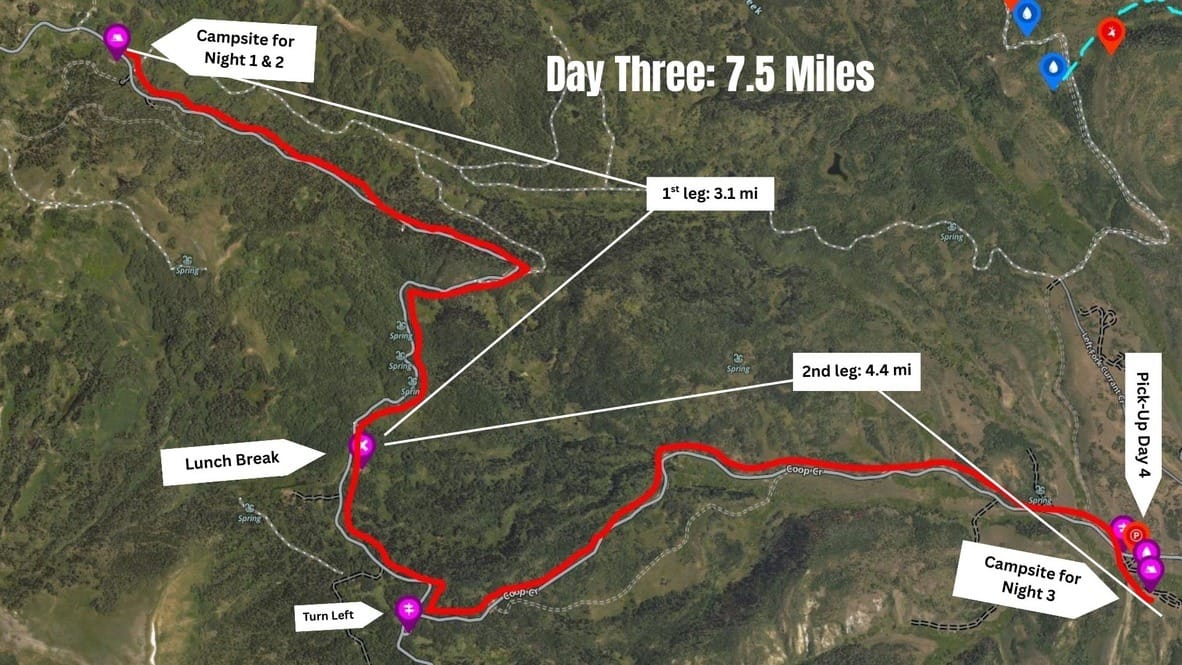#Trek2026
June 8-11, 2026

Contents
- Who's Invited to Attend Trek?
- Permission and Medical Release Form
- Trek Dates
- Pre-Trek Activities: Mark Your Calendar
- Trek Location
- Our Theme
- Physical Preparation
- Spiritual Preparation
- Sunday Film Festival
- Pioneer Stories (opens in new page ↗)
Who’s Invited to Attend Trek?
All youth 14 - 18 yrs old are invited to attend Trek. (Must turn 14 yrs old by December 31, 2026.) High School seniors are absolutely invited to attend!
Ward and Stake Youth Leaders are also invited to attend (including Stake Presidency & their Wives, Bishops & their Wives, Bishopric Counselors, and YW Presidencies). Any youth leader who would like to come as an “Aunt/Uncle” on Trek, are welcome!
*All youth and stake/ward leaders, coming to trek, will need to complete and submit the required Permission and Medical Release Form.
Permission and Medical Release Form
All individuals (youth and adults) attending Trek, need to complete and submit The Church’s permission/medical release form. Please submit the completed forms to your ward youth leaders by Sunday, January 25th. You can click below, to print and complete the form, or obtain a printed copy from your ward youth leaders.
*Please indicate what size sun-hoodie you’d like us to order for you, AT THE TOP OF YOUR FORM!! (ie: Small, Medium, Large, etc)
Trek Dates
Monday, June 8th - Thursday, June 11th, 2026
- Sunday, June 7th: Gear Drop-off & Mini Devotional, PM (Time TBA)
- Monday, June 8th: Depart for Trek, Early AM (Time TBA)
- Tuesday, June 9th: Trekking
- Wednesday, June 10th: Trekking
- Thursday, June 11th: Wake up and head home (Pick-up Time, TBA)
Pre-Trek Activities: Mark Your Calendar
- Jan 25th (Sun): Trek Permission Forms Due
- Feb 22nd (Sun): Trek Kick-Off! (For Youth, Parents, Bishops, Youth Leaders, Ma’s & Pa’s, Trek Committee Members), PM (Time TBA)
- March: Meet your Trek Family! (Activity Hosted by Ma & Pa - Date TBA)
- Apr 16th (Thu): Stake Trek Activity (“Get Your Trek On”), 7pm @ Stake Center
- May: Trek Family Get-Together (Hosted by Ma & Pa - Date TBA)
- May 16th (Sat): Pre-Trek Hike (“Check Yourself Before You Trek Yourself”), For all Trekkies and Trek Leaders, Early Am (Time TBA)
- June 7 (Sun): Gear Drop-off, Bucket Weigh-in, Mini Devotional, PM (Time TBA)
- June 8 (Mon): Depart for Trek, Early AM (Time TBA)
- June 11(Thu): Return Home, Early AM (Pick-up Time, TBA)
Trek Location

Our 2026 Trek Youth Conference will be held at Currant Creek (Up above Heber, UT). This will be a progressive Trek! Our company will be traveling 19 miles over the course of 3 days.


Our Theme
The theme of the 2026 Lehi Stake Youth Trek is: “Yoked.” This draws upon the General Youth Theme for the 2026 year, “Walk with Me” (Moses 6:34). We specifically want to emphasize, we yoke ourselves to Christ by making covenants with Him. We are strongest when we "take [His] yoke upon [us].” Like those who’ve gone before us, we can choose, everyday, to step into His double yoke and pull with Him. (Matthew 11:29 “Take my yoke upon you, and learn of me;”)

Physical Preparation
🎵 Keep rollin, rollin, rollin, Though your feet are swollen, Keep them doggies rollin, Rawhide! 🎵
An important part of preparing for Trek will be your physical preparation! Trekkers should be fit enough to walk 3 miles an hour and capable of walking up to 10 miles a day. (All while whistling pioneer songs and pulling heavy handcarts, at higher elevations.)
Sounds daunting?! No worries. "If ye are prepared ye shall not fear."
Start preparing now! Here's how…
Physical Training: Keep Movin’, Movin’, Movin’!
- Start by walking 15 mins a day, 3 times a week.
- After a month, increase your time to 30 mins a day, 3 times a week.
- Build-up to walking 4-5 times a week (2-3 miles, 2-3 times a week AND 4-5 miles, 2 times a week).
- At least 4 times before trek, walk longer stretches, up hill.
Additional Training Tips: Head ‘em Up, Move ‘em Out!
- Partner up! Find a walking buddy and hold each other accountable.
- Walk different routes to vary the terrain and elevation.
- Walk at different times of the day to get used to different temperatures.
- Choose your Trek shoes early on and "break them in"!
- Get in the habit of hydrating. You’ll need to drink A LOT of water on Trek. Start increasing your water intake. Take a water bottle with you on your walks and hydrate every 20 mins.
- As trek draws near, REDUCE the amount of soda and/or sugary drinks you consume. If soda is a habit for you, we encourage you to “dry up” at least one week before Trek.
Condition Your Feet: Chuck Norris Style!
- Walking barefoot whenever you can will help you develop leathery soles that give added protection.
- Rubbing your feet with Benzoin can toughen up the skin on your toes, heels & soles.
- Check your toenails for ingrown or sharp edges – trim them short before setting out.
- If you have parts of your feet that are known to blister quickly, cover them with moleskin (or duct tape) before heading out.
Trek Shoes: Old is Gold!
Wearing the wrong shoes on Trek can lead to foot pain and blisters. Ouch!
🎵 Ride ‘em In 🎵 Your shoes need to be comfy and well broken-in! Choose a sturdy pair of tennis or trail running shoes with a thicker sole and good arch support. Aim for a half or full size larger than your normal shoe size, to provide extra space for your feet to expand (which happens during prolonged hiking and when wearing thicker socks).
🎵 Cut ‘em Out 🎵: You don’t want to show up to Trek with brand new sneakers! Ditch the shiny new kicks; old is gold! Hiking boots are not recommended as they are often heavy, inflexible, and likely to rub and cause blisters. Avoid shoes with mesh around the front toe area, to prevent dirt and water from entering your shoes.
Trek Socks: Layer Up, Partner!
🎵 Ride ‘em In 🎵: Pair a thin, moisture-wicking synthetic liner sock (like polypropylene or nylon) with a thicker, outer sock made of Merino wool (or wool & nylon blends)! The inner liner wicks sweat away from your skin; the outer sock handles the moisture, keeping your feet dry. The two-layer system creates a buffer, allowing your feet and shoes to move independently, which reduces friction that causes blisters. Moisture-wicking socks not only help prevent blisters, but also ingrown toenails, heel bursitis, bruising, and fungal infections.
🎵 Cut ‘em Out 🎵: Avoid cotton socks! Cotton socks absorb moisture and do not allow for evaporation of moisture. Once cotton socks are wet they lose their shape and elasticity. This increases friction and rubbing and irritates the skin, contributing to blister formation.)
Spiritual Preparation
🎵 Come, Come, Ye Trek, No Toil Nor Labor Fear, But With Joy Wend Your Way 🎵
Your trek experience will be a unique and JOYFUL experience as you set aside time to prepare yourself, spiritually. Taking steps, now, to grow closer to the Savior and turn your hearts to those who came before you, will make the steps you take this June much more meaningful. Below are several things you can do to prepare your hearts and minds for an incredible trek experience.
🎵 Though Hard to You This Journey May Appear, Grace Shall be As Your Day 🎵
Grace is the gift of divine help and strength we receive from Heavenly Father through the Atonement of Jesus Christ. Our “FIVE to THRIVE” challenge will help you better recognize and receive the grace your Father in Heaven is willing to pour upon you.
"Five to Thrive" Challenge
Search the Scriptures:
Read from the scriptures at least FIVE MINUTES A DAY. Pray for understanding. Pray for the Holy Spirit to teach you and tutor you. Write down the impressions that come as you study God’s word. Take note of the spirit you feel as you sacrifice time to grow closer to God; you will feel God’s deep, deep love for you.
Plead for Grace:
For FIVE WEEKS, strive to have ONE meaningful conversation, with your Father in Heaven, every. single. day. Talk to Him. Confide in Him. Invite Him into every part of your life. Thank Him for every blessing. Ask Him for the help and strength you need. He will bless you with His grace. Expect miracles.
Yoke Your Ancestors:
Find FIVE ANCESTRAL NAMES to take to the temple, before Trek! How are each of them related to you? What can you learn about their stories? What characteristics or strengths do you admire in them? As you sit with them in the temple, think about their ongoing journey along the covenant path. Pray for them. As you make eternal covenants, on their behalf, you become part of their story. And they, in return, will become part of yours.
🎵 Tis Better Far for Us to Strive, Our Useless Cares From Us to Drive 🎵
Pause the social media, turn off the Xbox, and make a little room to learn about our pioneer ancestors. Their footsteps were full of faith, sacrifice, courage, determination, and love. Their stories will change you.
Pioneer Throwback:
READ FIVE or more inspirational PIONEER STORIES. We’ll be adding a new story, every week, leading up to Trek! Gather your friends and family for a “Try Not to...Cry” FHE challenge! Which stories touched your heart? Which ones inspire you to 🎵gird up your loins, fresh courage take🎵?
Film Festival:
Gather your family and friends and catch the Pioneer Spirit by WATCHING FIVE or more of the movies/conference addresses listed in SUNDAY FILM FESTIVAL! What is the spirit teaching you about pioneers of the past? What is the spirit teaching you about modern day pioneers? In what ways are YOU a modern day pioneer?
🎵 Do This, And Joy Your Hearts Will Swell - All is Well! All is Well! 🎵

Pioneer Stories
This recounting of Bodil’s story was taken from the book, "Remember", which is a compiled history of the "Second Rescue" put together by the Riverton, Wyoming Stake.
When the stake held their special stake-wide meeting to introduce the members to the task of the second rescue, President Kitchen (counselor in the Riverton Stake Presidency) shared this in his address:
"We have a special friend as a stake presidency. She is a young girl about nine or ten years of age. She was born in Denmark and was traveling with Jens and Elsie Nielson to be with her sister in Salt Lake City. They were members of the Willie Handcart Company. After the rescue party reached them at the base of Rocky Ridge, the Nielson family, along with the many others, were in pretty bad shape. Brother Nielson's feet were completely frozen but it was necessary for them to continue on their journey. Elsie put her husband in the handcart and pulled him...This young girl was given the task of helping - not only with their younger son but also the younger children of the Mortensen family to make sure they reached their next campsite...on Rock Creek. They began their journey that 15 miles up Rocky Ridge. It was cold. It was snowing. The wind was blowing. The snow was deep and the footing was treacherous. Our young friend did her job well and was successful in seeing that all the children reached camp safely. She then went to get sagebrush for the fires...Weary from her work of the day, and cold from the freezing temperatures, she sat down by the handcart wheel with her arms full of sagebrush. Her frozen body was found the next morning. She was buried along with the twelve others who died that night on Rock Creek. She isn't listed on the register of those who died along the way. Brothers and sisters, we have the opportunity to participate in the second rescue, or the spiritual rescue of these good people."
Later in the meeting, President McKinnon (another counselor in the Stake Presidency) told more of Bodil's story:
"When we shared with the Salt Lake Temple Recorder that her work needed to be done, he told us that the Mortensen family that traveled with the Willie Handcart Company were his ancestors and that he personally had done the work for them. We researched further and discovered that Bodil was a nine year old girl traveling with the Jens Nielson family to get to Salt Lake City where her older sister was. She was not a member of the Peter Mortensen family that Brother Wright had done the work for. She did not have any descendants to research her line. She is not even listed on the roster of the Willie Handcart Company. A forgotten little soul all alone in a foreign land...she had waited 135 years for all this to come together. 135 years to finally get to Salt Lake City, ...to finally receive the blessings of temple ordinances.
In the book, "Follow Me To Zion", a descendant of Bodil's brother, Hans, Dorothy Bottema, is quoted as saying this:
"Many times in this earthly life we think of our mission coming to an end when death comes to claim our physical body. Our family’s experience with Bodil has proven that one’s mission, even the most valuable part, may continue long after one’s earthly passing. Bodil’s body lay in an unmarked grave for over 130 years, with her Mortensen family knowing little of her struggles, courage, and sacrifice. Then in 1991, the story of this 11-year-old girl touched the hearts of the Riverton Wyoming Stake presidency to ignite the Second Rescue, which caused thousands of temple ordinances to be performed for members of the Willie handcart company and their families. The fire of Bodil’s story continues to burn in the hearts of all who hear it. We as a family have felt of her strength and help. We view her as our rescuer, inspiring us during times of trial and turmoil and increasing our testimonies of the sacrifices that are required for the gospel of Jesus Christ. We acknowledge that her role as a rescuer has been extended to countless others who have had the opportunity to hear or read the account of her journey. Bodil’s mission to rescue others will continue as long as her story is told. We anxiously await meeting Bodil, her parents, and her brothers and sisters. This reunion will be one of gratitude, joy, and love.”
Sunday Film Festival
Gather your family and friends and catch the Pioneer Spirit by WATCHING FIVE or more of the movies/conference addresses listed in SUNDAY FILM FESTIVAL! What is the spirit teaching you about pioneers of the past? What is the spirit teaching you about modern day pioneers? In what ways are YOU a modern day pioneer?
- Watch “17 Miracles” (included w/ Prime or free on youtube) https://www.youtube.com/watch?v=7VRFWSEe8Pg
- Watch “Ephraim’s Rescue” (included w/ Prime or free on youtube) https://www.youtube.com/watch?v=7BQCnyaI1WE
- Watch “The High Road - The Inspiring True Story”, 2017 (Stream on Plex or borrow DVD from The Doyles)
- Watch/Read President Hinckley’s conference address, “Our Mission of Saving” (Oct 1991) https://www.churchofjesuschrist.org/study/general-conference/1991/10/our-mission-of-saving?lang=eng
- Watch/Read Elder Cook’s conference address, "The Atonement of Jesus Christ Provides the Ultimate Rescue" (Apr 2025) https://www.churchofjesuschrist.org/study/general-conference/2025/04/16cook?lang=eng
- Watch/Read Elder Ballard’s conference address, “You Have Nothing to Fear from the Journey” (Apr 1997) https://www.churchofjesuschrist.org/study/general-conference/1997/04/you-have-nothing-to-fear-from-the-journey?lang=eng
- Watch/Read Elder Boom’s conference address, “True to the Faith That Our Parents Have Cherished” (Apr 2025) https://www.churchofjesuschrist.org/study/general-conference/2025/04/26boom?lang=eng
- Watch/Read Elder Ballard’s conference address, “Follow Jesus Christ with Footsteps of Faith” (Oct 2022) https://www.churchofjesuschrist.org/study/general-conference/2022/10/22ballard?lang=eng
- Watch/Read Elder Faust’s conference address, “Pioneers of the Future: “Be Not Afraid, Only Believe” (Oct 1997) https://www.churchofjesuschrist.org/study/general-conference/1997/10/pioneers-of-the-future-be-not-afraid-only-believe?lang=eng
- Watch/Read Elder Ballard’s conference address, “The Trek Continues” (Oct 2017) https://www.churchofjesuschrist.org/study/general-conference/2017/10/the-trek-continues?lang=eng
- Watch/Read Elder Wirthlin’s conference address, “Faith of Our Fathers” (Apr 1996) https://www.churchofjesuschrist.org/study/general-conference/1996/04/faith-of-our-fathers?lang=eng
- Watch/Read Elder Ballard’s conference address, “Faith in Every Footstep” (Oct 1996) https://www.churchofjesuschrist.org/study/general-conference/1996/10/faith-in-every-footstep?lang=eng
- Watch/Read Elder Oak’s address, “Modern Pioneers” (Oct 1989) https://www.churchofjesuschrist.org/study/general-conference/1989/10/modern-pioneers?lang=eng
- Watch/Read President Monson’s address, “Pioneers All” (Apr 1997) https://www.churchofjesuschrist.org/study/general-conference/1997/04/pioneers-all?lang=eng
- Watch/Read Sister Smoot’s address, “Pioneer Shoes through the Ages” (Oct 1997) https://www.churchofjesuschrist.org/study/general-conference/1997/10/pioneer-shoes-through-the-ages?lang=eng
- Watch/Read Sister Beckham’s address, “Modern Pioneers” (Apr 1997) https://www.churchofjesuschrist.org/study/general-conference/1997/04/modern-pioneers?lang=eng
- Watch/Read Elder Oak’s address, “Following the Pioneers” (Oct 1997) https://www.churchofjesuschrist.org/study/general-conference/1997/10/following-the-pioneers?lang=eng
- Watch “Faith in Every Footstep: The Epic Pioneer Journey [Video Presentation]” https://www.churchofjesuschrist.org/study/general-conference/1997/04/faith-in-every-footstep-the-epic-pioneer-journey?lang=eng
- Watch “Trek-the Movie” (Rent on Apple TV or stream on Paramount)